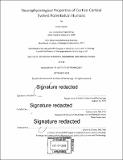| dc.contributor.advisor | Sydney Cash. | en_US |
| dc.contributor.author | Crocker, Britni | en_US |
| dc.contributor.other | Harvard--MIT Program in Health Sciences and Technology. | en_US |
| dc.date.accessioned | 2019-03-11T19:36:07Z | |
| dc.date.available | 2019-03-11T19:36:07Z | |
| dc.date.copyright | 2018 | en_US |
| dc.date.issued | 2018 | en_US |
| dc.identifier.uri | http://hdl.handle.net/1721.1/120886 | |
| dc.description | Thesis: Ph. D. in Medical Engineering and Medical Physics, Harvard-MIT Program in Health Sciences and Technology, 2018. | en_US |
| dc.description | Cataloged from PDF version of thesis. | en_US |
| dc.description | Includes bibliographical references (pages 94-103). | en_US |
| dc.description.abstract | Invasive electrical brain stimulation has been increasingly used to treat an ever wide range of neuropsychiatric disorders from Parkinson's disease to epilepsy and depression. In addition, single pulse electrical stimulation (SPES) is increasingly used to map connections between cortical areas using cortico-cortical evoked potentials (CCEPs). However, the properties and mechanisms underlying brain stimulation remain mostly unknown, hindering the application of stimulation to new neurological disorders and the development of adaptive stimulation technologies that could improve clinical outcome. To improve understanding of SPES, we systematically explored the effects of cortical electrical stimulation in human epilepsy patients. These patients have intracranial electrodes implanted for intractable epilepsy as part of their clinical course, creating a unique opportunity to simultaneously stimulate and record the human brain in multiple locations. Single pulses of electrical current were delivered across pairs of electrodes in the human cortex, and the neurophysiological responses are recorded. Examining some fundamental properties of CCEPs, we show that the brain's response to less than a millisecond pulse of stimulation can be detected up to one second post-stimulus. This response has two peaks with distinct properties; compared to the second peak, the first is less variable, and its timing is less delayed by distance, while its magnitude is more diminished by distance. Looking at the spatial distribution of CCEPs, we show that stimulation-derived networks are more closely related to structural connectivity than functional connectivity. However, correcting for distance eliminates this difference. Monitoring CCEPs across different brain states, we show that the second peak of the CCEP is significantly diminished during anesthesia. Taken together, these results provide important insight into the basic neurophysiological properties of CCEPs, their spatial distribution, and how they are modulated by the state of the brain itself. These characteristics can inform experimental design, provide input parameters for modeling studies, and be applied towards the development of adaptive closed-loop stimulation paradigms. | en_US |
| dc.description.statementofresponsibility | by Britni Crocker. | en_US |
| dc.format.extent | 103 pages | en_US |
| dc.language.iso | eng | en_US |
| dc.publisher | Massachusetts Institute of Technology | en_US |
| dc.rights | MIT theses are protected by copyright. They may be viewed, downloaded, or printed from this source but further reproduction or distribution in any format is prohibited without written permission. | en_US |
| dc.rights.uri | http://dspace.mit.edu/handle/1721.1/7582 | en_US |
| dc.subject | Harvard--MIT Program in Health Sciences and Technology. | en_US |
| dc.title | Neurophysiological properties of cortico-cortical evoked potentials in humans | en_US |
| dc.title.alternative | Neurophysiological properties of CCEPs in humans | en_US |
| dc.type | Thesis | en_US |
| dc.description.degree | Ph. D. in Medical Engineering and Medical Physics | en_US |
| dc.contributor.department | Harvard University--MIT Division of Health Sciences and Technology | |
| dc.identifier.oclc | 1088723421 | en_US |
